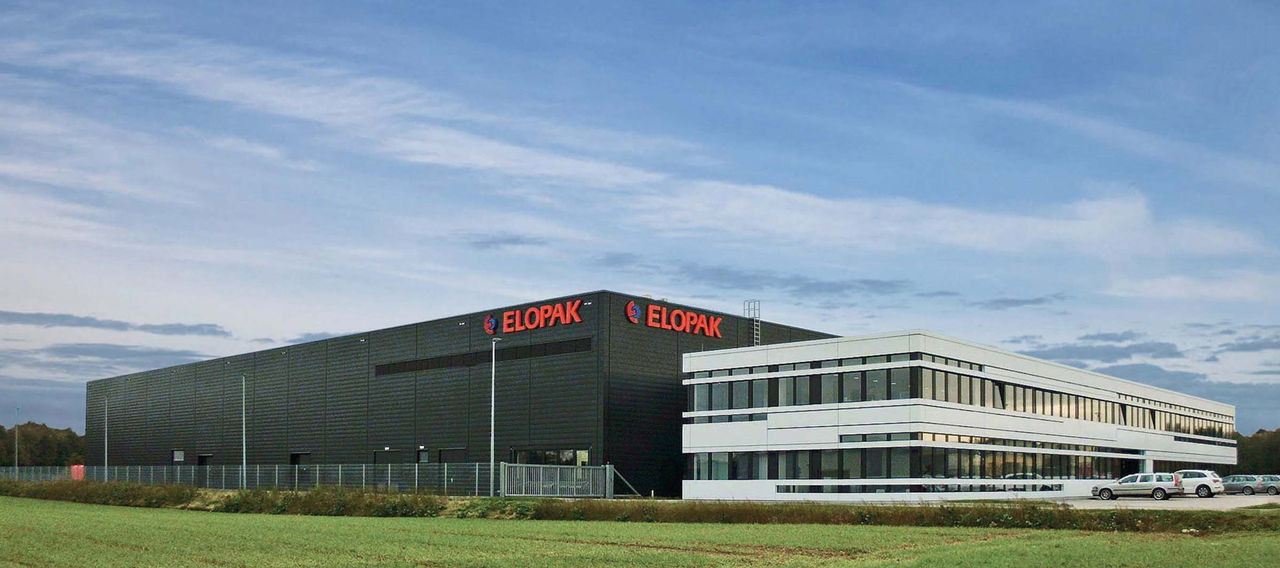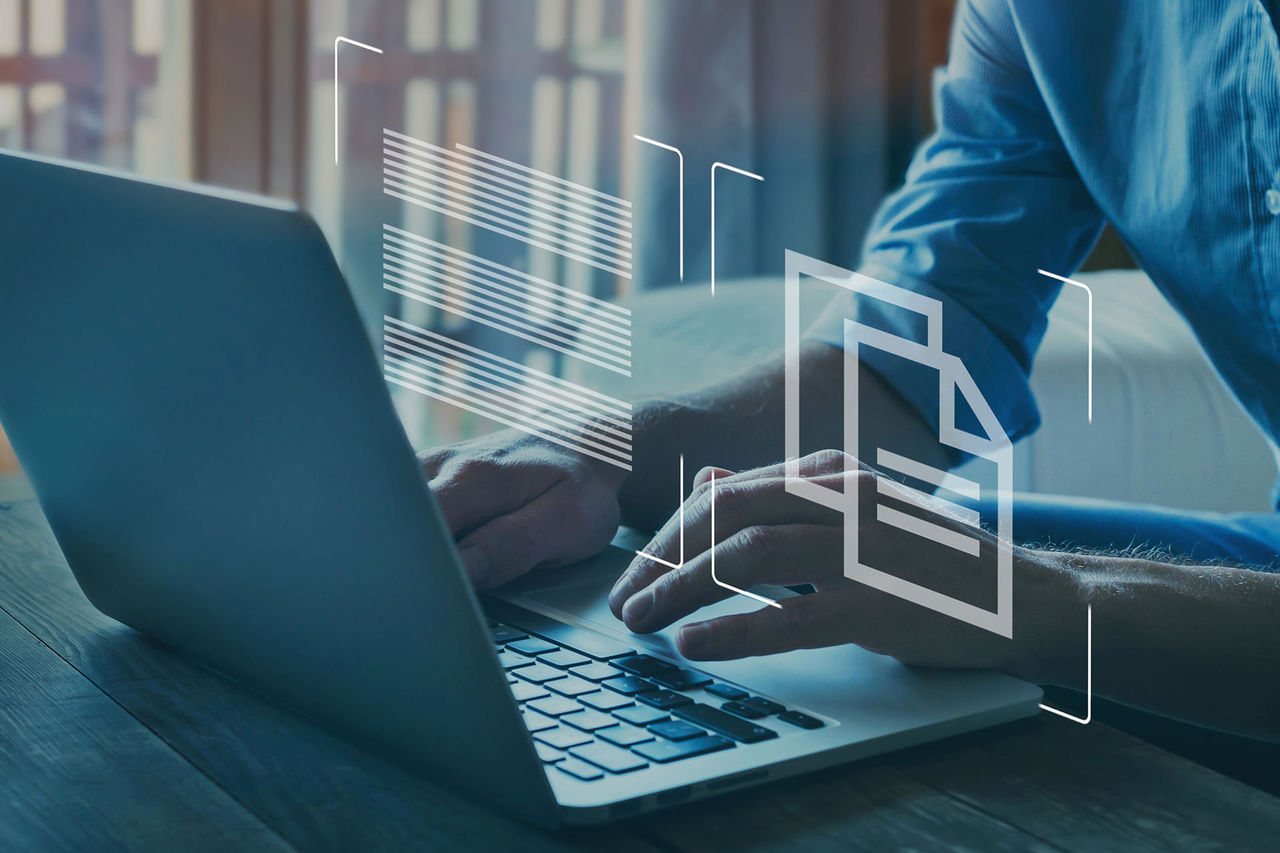Sophisticated filling equipment
ELOPAK is one of the world’s leading manufacturers supplying businesses in the food and beverage industry with complete packaging systems for liquid and paste-like food products. Printed, embossed and die-cut composite carton blanks, closures and required filling equipment all come from a single source, ensuring optimum compatibility between products, packaging and filling technology. More than 300 engineers and maintenance technicians are responsible for developing, installing and maintaining the filling systems.
ELOPAK’s latest E-PS120A aseptic filling platform is capable of processing up to 12,000 cartons per hour, while also having the flexibility to fill high or low viscosity liquids into cartons of different designs, sizes and closures. Around 70 development engineers at ELOPAK’s Monchengladbach site are using SOLIDWORKS for mechanical design and Eplan Electric P8, Eplan Fluid and Eplan Pro Panel for planning the electrical and fluid engineering components of the filling machines. Designers from all disciplines previously used a PLM system to store all product-relevant data.
Efficiency driven by ERP integration
ELOPAK was not fully utilizing the PLM functions of the replaced PLM system in all areas. Workflow mechanisms were only being used in mechanical design. EPLAN data was only stored in the system as completed plans. Linking the existing PLM system to the previous in-house ERP system was detrimental to efficiency and considerable effort was required to ensure cross-discipline data consistency. This led to dissatisfaction in both the business administration and design departments. Some there still recalled the difficulties encountered during the initial implementation of the software. “The Workgroup Manager in particular had significant system-related errors,” recalls René Wolters, Specialist CAD & PLM / Service and Knowledge Management at ELOPAK. “Despite a lot of overtime, we barely achieved any output for the first four months.”
Full switchover to SAP
While standardizing the ERP systems across the group to SAP, the question arose as to how engineering data should be integrated. “Transferring the design data into the SAP database is better than an interface between the existing PLM system and SAP,” says Peter Häberle, Project Manager at Cideon. “Only then can full data consistency be achieved throughout the company.” Shared data then serves as a single source of truth, ensuring that everyone in the organization, regardless of their roles, always has reliable access to up-to-date and valid information. A ‘digital common thread’ then runs through the various systems and processes.
Connecting these systems and processes enables the systematic, cross-disciplinary use of models and data throughout the entire product life cycle. Since this facilitates coordination between different departments, it was not just business administration that was in favor of this variant. The development department needed no further convincing of the benefits of replacing the previously used PLM system with the SAP PLM Engineering Control Center (ECTR). The system enables all design data used throughout the company to be merged into databases on the cloud-based S4/HANA platform. This ensures secure and easy access to all product development information, regardless of department.
Developing machines on new software
As part of the group-wide ERP software switchover, a renowned IT consulting firm acted as general contractor for process design within SAP. The contract to implement ECTR as the main software system in machine development was awarded to Cideon. “When I first saw a demonstration of SAP PLM ECTR, I was impressed by the mass of information the system instantly provided,” recalls René Wolters. At the commencement of the project, Cideon implemented a SOLIDWORKS and Eplan starter package. The company worked closely with the customer on this basis to work out requirements for specific enhancements to the project, and also under-took implementation.
“I wish all SAP implementation sub-projects were as smooth as Cideon’s SAP PLM ECTR implementation,” praised René Wolters. “After a short period of familiarization, I gained an overview I hadn’t had before, and users were very positive about the considerable improvements over the solution they had been using previously.”
The challenge of data migration
Cideon’s range of services includes software products from renowned manufacturers, system implementation and CAD integration, as well as consulting and active support for process optimization in engineering. A key part of the ELOPAK project was migrating the engineering data stored in the PLM system. Data from SOLIDWORKS was extracted using a specialized export tool and successfully imported into the ERP system using Cideon import tools for SAP. “Data migration is one of the trickiest tasks during a software switchover and should not be underestimated,” explains Peter Häberle. “Getting it right first time is rare because unforeseen inconsistencies almost always occur.”
This was also the case at ELOPAK, where data migration was to be limited to approved parts and assemblies in the ERP system. However, the approval status of SOLID-WORKS data in the engineering system did not always match that on the ERP side. Furthermore, and unsurprisingly given the length of time the software had been in use, individual fields had not been used consistently. For these and similar reasons, data migration needed to be repeated three times. Nevertheless, Cideon’s experts managed to fully migrate the data from SOLIDWORKS within a reasonable period of time.
Steps into the future
The old PLM system remains in use in read-only mode for a transitional period as some parts and assemblies with all their revision levels were not included in the data migration. Designers gradually add to the migrated dataset by using and modifying existing designs. “With what I now know today, I would migrate all the data with all the release and revision statuses,” explains René Wolters. “We would then have more quickly achieved the goal of working with a unified system without any disconnects between systems.” Migrating Eplan data by Cideon to SAP through SAP PLM ECTR is nearing completion.
Cideon provided training to internal key users in a Train-the-trainer course, and fully undertook this task independently. The successful switchover of the main machinery development software at ELOPAK now ensures that every action throughout the company is based on valid, up-to-date and approved documentation. “Company-wide access to data from a uniform source eliminates interfaces and the sources of errors associated with them,” says René Wolters, citing the main benefit of the software conversion. “For many actions, SAP PLM ECTR also saves a lot of time compared to the system we were using previously.” Switching the PLM system over to SAP’s own SAP PLM ECTR has facilitated and accelerated design changes and cross-discipline teamwork.

















